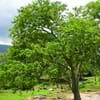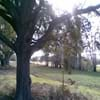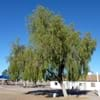Life Span
Perennial
Annual
Origin
Africa, South-Eastern Asia
Central America, South America
Types
Not Available
Willow Leaf, Sieva Lima, Dixie Speckled
Habitat
Subtropical forests, Tropical regions
Humid climates, Subtropical climates, Warmer regions
USDA Hardiness Zone
5-9
6-11
AHS Heat Zone
9 - 5
Not Available
Sunset Zone
1a, 1b, 2a, 2b, 3a, 3b, 7, 8, 9, 10, 11, 14, 18, 19, 20, 21
Not Available
Habit
Clump-Forming
Vining/Climbing
Minimum Width
Not Available
Flower Color
Pale Yellow, Yellow green
White, Ivory
Flower Color Modifier
Bicolor
Bicolor
Fruit Color
Green, Light Green
Green
Leaf Color in Spring
Green
Green
Leaf Color in Summer
Light Green
Green
Leaf Color in Fall
Green, Light Green
Green
Leaf Color in Winter
Brown, Light Yellow, Tan
Green
Leaf Shape
Oval
Willow-shaped
Plant Season
Summer, Fall, Winter
Not Available
Sunlight
Full Sun
Full Sun
Type of Soil
Clay, Loam, Sand
Loam, Sand
The pH of Soil
Acidic, Neutral, Alkaline
Acidic, Neutral, Alkaline
Soil Drainage
Average
Well drained
Bloom Time
Summer, Late Summer, Early Fall
Indeterminate
Tolerances
Pollution, Drought, Salt
Drought
Where to Plant?
Ground
Container, Ground, Pot
How to Plant?
Seedlings, Stem Cutting
Seedlings
Plant Maintenance
Medium
High
Watering Requirements
Needs less watering
Allow to dry out slightly between watering, Do Not over Water, Requires regular watering
In Summer
Lots of watering
Not so frequently
In Spring
Moderate
Alternate Days
In Winter
Average Water
Drought Tolerant
Soil pH
Acidic, Neutral, Alkaline
Acidic, Neutral, Alkaline
Soil Type
Clay, Loam, Sand
Loam, Sand
Soil Drainage Capacity
Average
Well drained
Sun Exposure
Full Sun
Full Sun
Pruning
A hard prune may be necessary if the plant becomes woody, Cut upper 1/3 section when young to enhancegrowth, Remove damaged leaves, Remove dead branches, Remove dead leaves
Prune to control growth
Fertilizers
10-10-10 diluted liquid fertilizer, All-Purpose Liquid Fertilizer, Compost
organic fertlizers
Pests and Diseases
Aphids, Downy mildew, Purple Blotch, Red blotch
Aphids, Armyworm, Bean rust, Bean weevils, Corn earworm, Cucumber beetles, Curly top, Damping off, Darkling beetles, Earwigs, Fusarium root rot, Grasshoppers, Leafhoppers, Loopers, Lycaenid pod borers, Lygus bugs, Mosaic viruses, Nematodes, Powdery mildew, Saltmarsh caterpillar, Seedcorn maggot, Slugs, Snails, Spider mites, Stink bugs, Thripes, White mold, Whiteflies
Plant Tolerance
Drought, Salt and Soil Compaction, Shade areas
Drought
Flowers
Showy
Insignificant
Flower Petal Number
Single
Single
Fragrant Flower
No
Not Available
Fragrant Fruit
No
Not Available
Fragrant Leaf
No
Not Available
Fragrant Bark/Stem
No
Not Available
Showy Bark
No
Not Available
Foliage Texture
Fine
Medium
Foliage Sheen
Glossy
Matte
Self-Sowing
Yes
Not Available
Attracts
Bees, Flies, pollinators
Not Available
Allergy
conjunctivitis, sneezing
Not Available
Aesthetic Uses
Not Used For Aesthetic Purpose
Not Used For Aesthetic Purpose
Beauty Benefits
Making cosmetics, Not Available
Not Available
Environmental Uses
Air purification, Shadow Tree, Soil protection
Not Available
Medicinal Uses
Cardiovascular problems, Detoxifies lever, Diabetes, Dysentry, Jaundice, Menstrual Disorders
cholesterol-lowering, constipation, Digestive disorders, Fiber, Heart problems
Part of Plant Used
Inner Bark, Leaf Stalks
Seeds
Other Uses
Can be made into a herbal tea, Oil is used for aromatherapy, Used as a fodder tree in agricultural areas
Used As Food
Used As Indoor Plant
No
No
Used As Outdoor Plant
Yes
Yes
Garden Design
Dried Flower/Everlasting, Lawns and Turf, Mixed Border, Wildflower
Edible, Herb, Vegetable
Botanical Name
Terminalia arjuna
PHASEOLUS lunatus
Common Name
Arjuna
Butter Bean, Lima Bean
In Hindi
अर्जुन वृक्ष
सेम फली
In German
Terminalia arjuna
Limabohne
In French
Terminalia arjuna
Haricot de Lima
In Spanish
Migdałecznik arjuna
Haba
In Portuguese
Migdałecznik arjuna
feijão-Lima
In Polish
Migdałecznik arjuna
Lima Bean
In Latin
arjuna
Lima Bean
Phylum
Magnoliophyta
Tracheophyta
Class
Not Available
Magnoliopsida
Genus
Terminilia
Phaseolus
Clade
Angiosperms, Eudicots, Rosids
Angiosperms, Eudicots, Rosids
Tribe
Not Available
Phaseoleae
Subfamily
Not Available
Faboideae
Number of Species
Not Available
Importance of Arjuna Tree and Lima Bean
Want to have the most appropriate plant for your garden? You might want to know the importance of Arjuna Tree and Lima Bean. Basically, these two plants vary in many aspects. Compare Arjuna Tree and Lima Bean as they differ in many characteristics such as their life, care, benefits, facts, etc. Every gardener must at least have the slightest clue about the plants he wants to plant in his garden. Compare their benefits, which differ in many ways like facts and uses. The medicinal use of Arjuna Tree is Cardiovascular problems, Detoxifies lever, Diabetes, Dysentry, Jaundice and Menstrual Disorders whereas of Lima Bean is cholesterol-lowering, constipation, Digestive disorders, Fiber and Heart problems. Arjuna Tree has beauty benefits as follows: Making cosmetics and Not Available while Lima Bean has beauty benefits as follows: Making cosmetics and Not Available.
Compare Facts of Arjuna Tree vs Lima Bean
How to choose the best garden plant for your garden depending upon its facts? Here garden plant comparison will help you to solve this query. Compare the facts of Arjuna Tree vs Lima Bean and know which one to choose. As garden plants have benefits and other uses, allergy is also a major drawback of plants for some people. Allergic reactions of Arjuna Tree are conjunctivitis and sneezing whereas of Lima Bean have Not Available respectively. Having a fruit bearing plant in your garden can be a plus point of your garden. Arjuna Tree has showy fruits and Lima Bean has no showy fruits. Also Arjuna Tree is not flowering and Lima Bean is not flowering . You can compare Arjuna Tree and Lima Bean facts and facts of other plants too.





